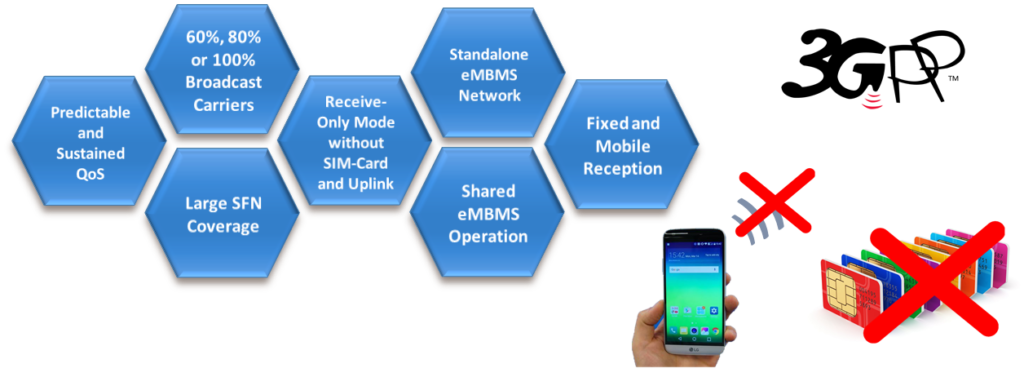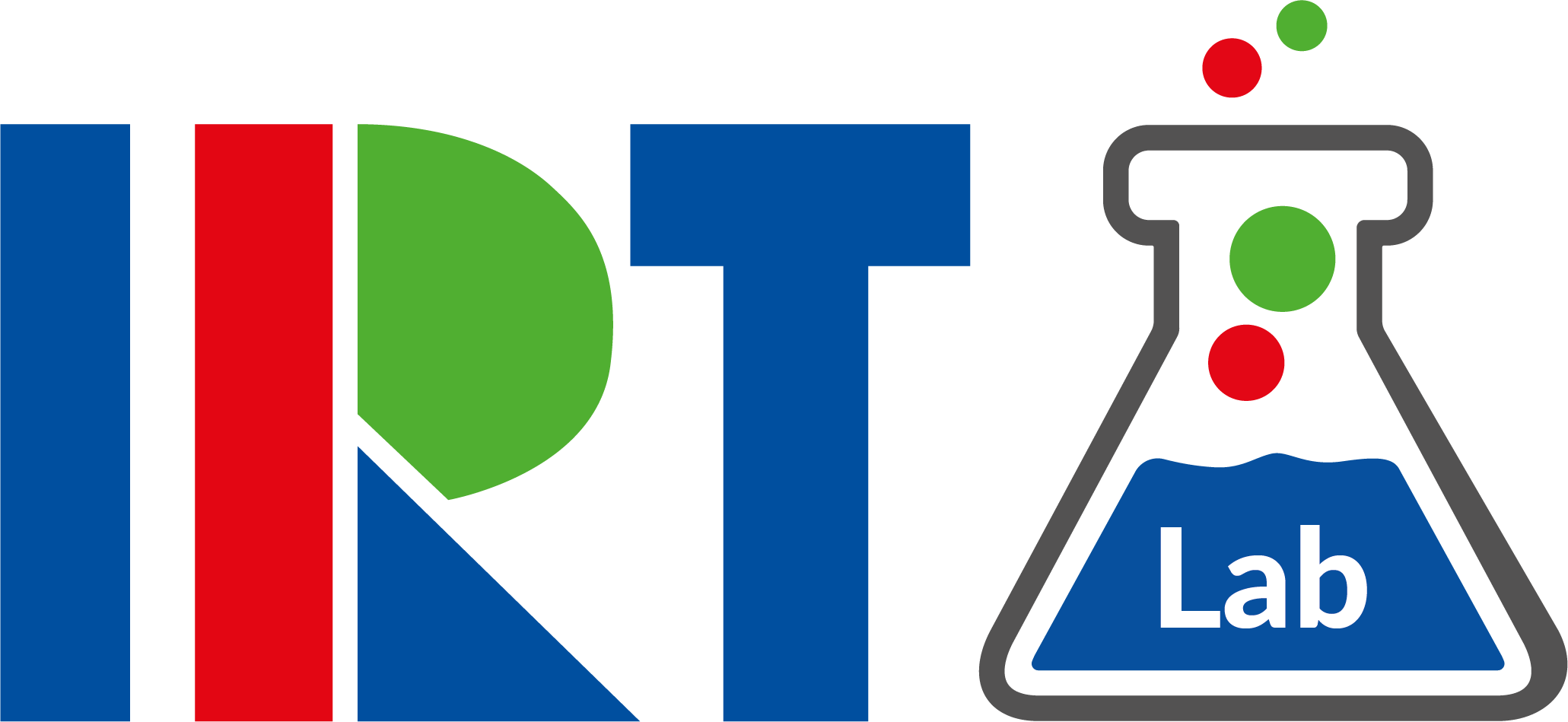Terrestrial Broadcast features have been adopted by the standardisation organisation 3GPP, for the first time, under the so-called LTE eMBMS Release 14. New features such as the possibility of using 100% of the carrier resources to transmit broadcast services, the use of Extended Cyclic Prefix (known as Guard Intervals in terrestrial broadcast standards) that could ideally extend Single Frequency Network (SFN) coverage areas for High-Power High-Tower deployments, the configuration of a receive-only mode to receive services without using the uplink or the need of a SIM-card, define what is commonly known as 5G Broadcast and has been tested in the Bavarian research project 5G TODAY.

The standard is currently being evolved, under the LTE branch in Release 16, to improve the support of larger inter-site distances in SFN and better performance in mobile reception conditions, amongst others improvements.
On the other hand, 3GPP is currently studying the implementation of multicast and broadcast capabilities for 5G System and, in the future, also for 5G-NR (5G-New Radio is a term used in 3GPP to refer to the new radio-access layer of 5G and has no correlation with radio broadcast).
The 5G System and 5G-NR are new sets of specifications commonly referred to the real 5G that everybody is talking about which offers larger data rates, better flexibility, low latency, etc. The initial releases of 5G were not ready to include multicast or broadcast features, as they were primarily focused on unicast (point-to-point).

The question arises now if 5G will itself also support the same features specified for LTE to deliver free-to-air audiovisual services (e.g. without uplink, SIM-card, with sustained quality-of-service, reusing broadcast infrastructure).
We do not know the answer yet, however, within the 5G-PPP 5G-Xcast project, IRT, in collaboration with EBU, BBC, Nokia, Samsung, Expway, One2Many and Universitat Politècnica de València have designed the 5G architecture that would allow including multicast and broadcast capabilities into 5G System and 5G-NR with minor modification to the existing unicast framework defined in 3GPP (read our deliverable).
With the 5G-Xcast framework, it is possible to use multicast and broadcast as network optimization tools (e.g. to adapt to user and traffic load) and also to deliver terrestrial broadcast TV services with a pre-defined quality of service and coverage.
A paper recently published in the journal “IEEE Transactions on Broadcasting” has developed the way to configure 5G-NR carriers in order to transport terrestrial broadcast services. The proposal goes beyond the recent developments in 3GPP around LTE-based 5G Broadcast. We are proposing a 3-step approach:
- Developing a basic free-to-air broadcast functionality reusing as much as possible the elements (e.g. frame formats, signaling) that already exist for unicast transmissions.
- Addressing the introduction of small-scale SFN still being as close as possible to 5G unicast.
- Studying the necessary changes to introduce large-scale SFN capabilities or other modes that could also be used in broadcast infrastructure such as regionalized SFNs or Multi Frequency Network (MFN) deployments.

In the paper we have proven benefits of using 5G-NR in terms of
- better bandwidth utilization (from 90% in LTE to about 97% in 5G-NR), larger bandwidths with increased peak data rates, the possibility of supporting the antenna array technology MIMO and Carrier Aggregation
- and better performance for the signalling subframes and the actual payload with the introduction of more efficient encoding methods like Polar Codes and Low Density Parity Check (LDPC).
For the moment, this is not more than research. It is unclear if 3GPP will move into this direction. In the paper we also show that it is difficult to know if the benefits of “redoing” LTE-based 5G Broadcast under 5G-NR are larger than the high impact in terms of architecture and radio interface requirements.
At this point, we can state that LTE-based 5G Broadcast is the best solution offered in 3GPP for broadcasters to deliver free-to-air audiovisual services to smartphones. At the same time, it is important to look at ongoing developments of multicast and broadcast support in 3GPP towards Release 17 (and beyond).

